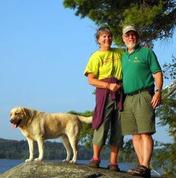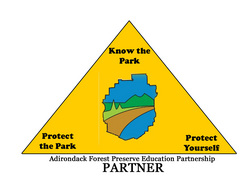The Case for Teaching the Rational Decision Making Process
I occasionally have been asked why, in The Backcountry Classroom, we place all of our emphasis on the rational decision model and don’t give any space to tacit or naturalistic decision making. I don’t have a good response for not giving considerable space to naturalistic decision making and when a third edition of the book is published we will be sure to make up for that shortcoming. On the other hand I have a ready response as to why we place so much emphasis on rational decision making. The rational decision making process is mechanistic in nature. Its steps are visible and transparent thus it is easy to teach, practice and reflect upon unlike naturalistic models. If you want to teach decision making to novices this is where you want to start. Let me make a sport’s analogy. If you want to teach basketball to 13 and 14 year olds do you start by teaching them the triangle offense made famous by Phil Jackson who used it to win 9 NBA championships? Of course not. Why not, it has proven incredibly successful for Phil Jackson. You don’t teach novice basketball players the triangle offense because it is incredibly difficult to learn and takes an incredibly long time to master. Proponents however argue that once learned, this difficult to learn offense becomes very natural and is structured to make sense. I would say the exact same thing regarding naturalistic decision making. Once decision making is mastered it is extremely natural (thus its name) and makes complete sense but to the novice you might as well ask the person to do a triple salchow, it is impossible.
Okay then how do you teach decision making? Well in the perfect world I would start in elementary school and teach learners what decisions are and have them explore the concepts of options, cause and effect, and consequences. I would reinforce these concepts throughout their elementary school years across the curriculum. Hopefully by the time they reached their early teens they would have a good grasp of decision making and at this point I would introduce them to the rational decision making model as outlined in The Backcountry Classroom. I would create an environment similar to competitive athletics; I would introduce the terminology and drill them in the fundamentals. I’d create drills based on these fundamentals; context, what is it, identify the problem to solve, brainstorm options, balance the pros and cons, how would you implement, what does reflection look like etc all the time reinforcing the basic concepts of cause and effect and consequences. I would be providing guided practice for group and individual decision making in a variety of scenarios and gradually more authentic situations.
As learners move into high school I would make their decision making opportunities increasingly more authentic and regularly make them totally authentic. I would also regularly provide opportunities for learners to reflect on decisions made by themselves as well as the decisions they observe being made by others. The reflection would be both individual (journals) and group (debriefs). By the time these youngsters graduate from high school they will have been practicing rational decision making for six or more years. Some will be ready to explore the naturalistic decision making model but just as most basketball players entering college have a pretty good grasp of the fundamentals, most still aren’t ready for the triangle offense. In this case the naturalistic decision making model is as useful to these decision makers as the triangle offensive is to freshman basketball players. Useful to some but beyond the grasp of most.
There is one catch here. There is a growing body of knowledge that demonstrates how as brains develop decision making moves from the amygdala, the more primitive, emotion driven portion of the brain, to the frontal lobes which are more associated with behavioral inhibition. This switch seems to occur in the early twenties and is the reason that young adults have "matured" so much by the time they reach their mid-twenties. What we don’t know is the role our culture plays in this. Do the brains in cultures where youngsters are expected to take on more responsibility at an earlier age develop at a faster rate than in our culture where teens are frequently not allowed to make decisions and even more rarely held accountable for them? Are our efforts to teach decision making for naught because we must patiently wait for the brain to mature? Is decision making largely biological, cultural or a combination of the two? Ahh the nature versus nurture argument rears its head once again.



 RSS Feed
RSS Feed
